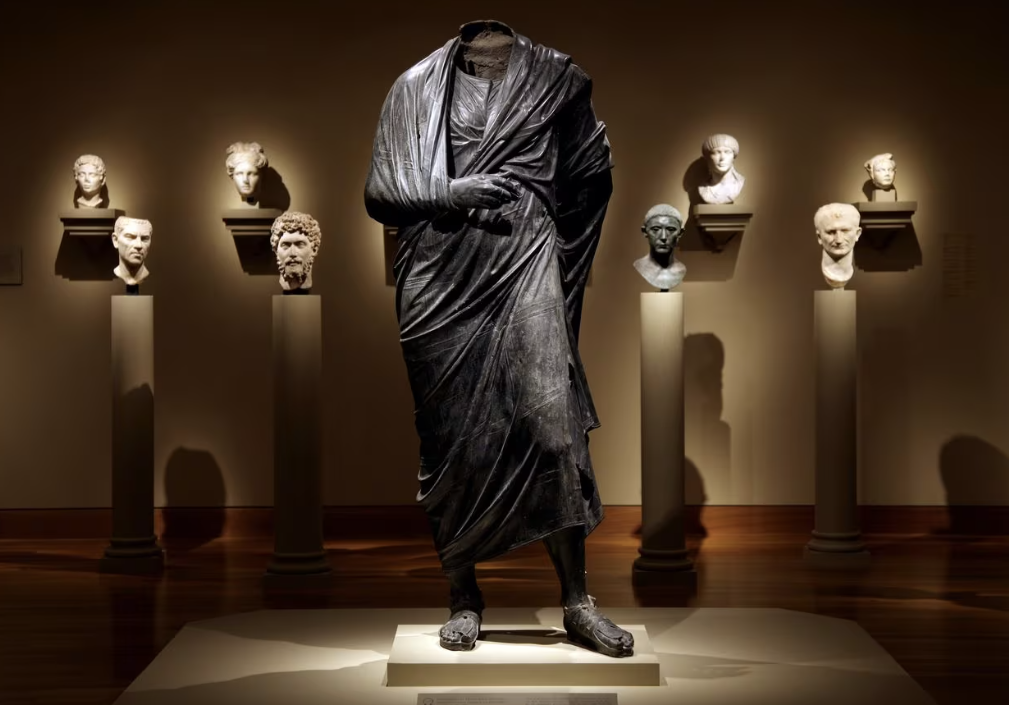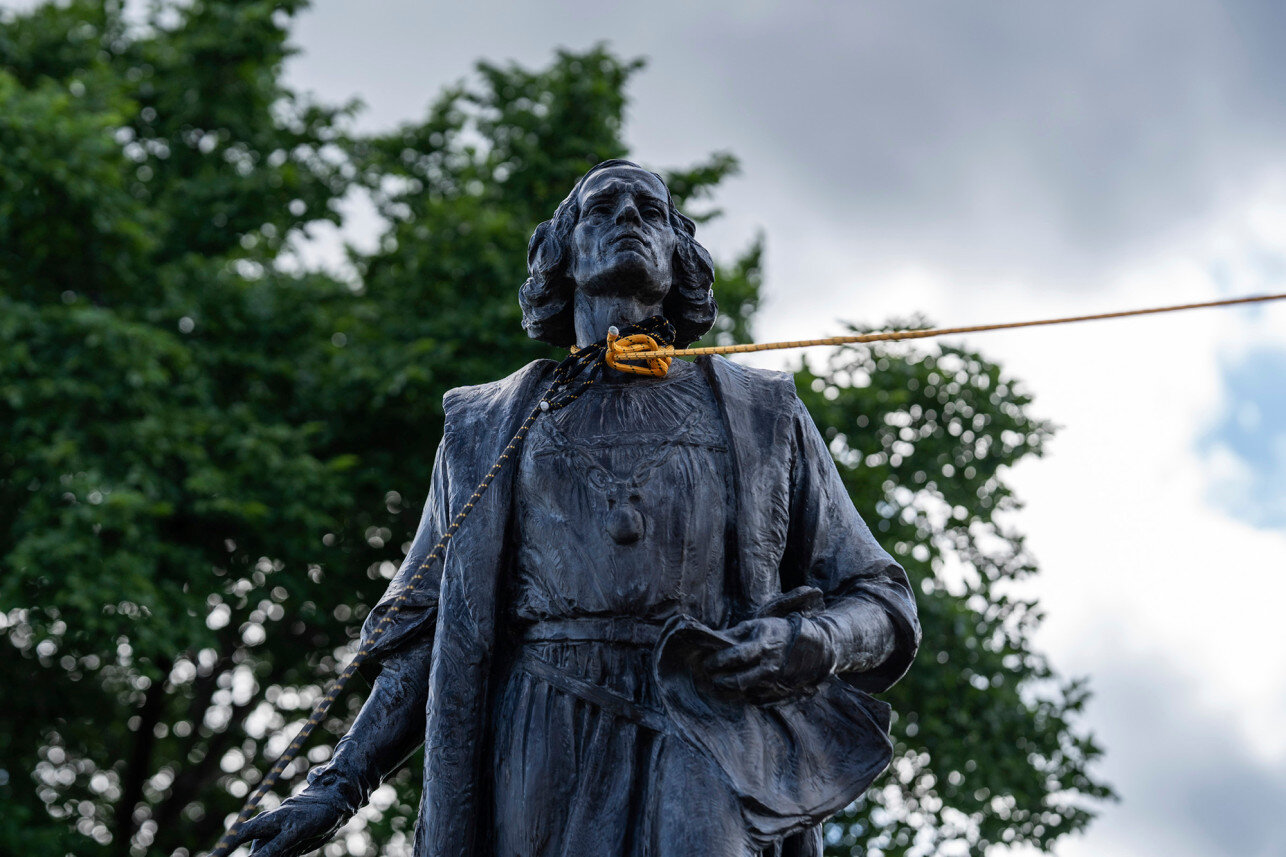News

For the Rescuer of an Ancient Shipwreck, Trouble Arrived in the Mail
The packages were sent to a woman whose work had led to the heralded recovery of the Kyrenia, and to new insights into classical Greek seafaring. But their ancient contents were a problem.

NY Asst. DA Bogdanos Returns Legally Owned Objects to Greece?
Cycladic Figure 70 Years Plus in U.S. Sent to Greece Without Evidence of Crime
‘Enough is enough’: US looted treasures unit faces accusations over credit
Archaeologist Christos Tsirogiannis accuses Manhattan DA’s office of abusing intellectual property

Prove it: Cleveland Museum of Art lawsuit challenges New York DA to prove bronze sculpture was stolen - Analysis
In essence, the museum’s lawsuit sends a simple message to the DA’s office. You say the work was looted and is stolen property? Prove it.

'The most illiquid property you can have is a Greek vase': Vincent Geerling on the challenges facing the antiquities trade
The chairman of the International Association of Dealers in Ancient Art reflects on an increasingly scrutinised industry as the organisation marks its 30th anniversary.

A Lawyer’s Assessment of the Return of the Brutus Aureus
Is the Beale case just a New York thing? Not at all, says the lawyer and expert for cultural property protection Peter K. Tompa.
‘Easily Recognisable Fakes’ Among Artefacts Repatriated to Italy from the US
Forged objects have been identified among the 60 antiquities returned amid much fanfare earlier this year
The Illicit Trade in Antiquities is Not the World’s Third Largest Illicit Trade: A Critical Evaluation of a Factoid
The claim that the illicit trade in antiquities is the third largest, second only to arms and narcotics, is widely repeated. But where does this claim originate and what is the evidence for its veracity? The authors present a ‘stratigraphic excavation’ of the claim by systematically searching through academic articles, popular press and policy literature to reveal the factoid's use and reuse over the past five decades. The authors find that the claim is not based on any original research or statistics, and it does not originate with any competent authorities. The analysis demonstrates how the uncritical repetition of unsubstantiated ‘facts’ can undermine legitimate efforts to prevent looting, trafficking and illicit sale of antiquities.
The Careful Collector: Don’t Import Buyer’s Remorse
Going antiquing in the Casbah in Marrakesh or buying an ancient coin from a dealer in Germany offers the fun of the hunt, a way to own a piece of history, learn something about a different culture and interact with foreign sellers. Increasingly, however, that great find at a local market or on the Internet may turn into a big headache when imported into the United States – if you run afoul of obscure regulations few purchasers of cultural goods know anything about.
'Damaging and unjust' legislation linking art and antiques trade to money laundering and terrorism financing must stop, industry body says
Cinoa, the dealer association, has issued an open letter criticising recent reports that make 'false claims' linking industry to crime
The bigger picture: arts under attack
The EU has introduced new art and antiques regulation. It raises serious questions about citizens’ rights to personal property.
What Was Cy Vance Doing While Murders Were Soaring on His Watch?
Manhattan counted 88 murders so far this year, up from 80 in 2020, according to the New York Police Department. That, in turn, is an increase over the 52 homicides in Manhattan in 2019, which in turn was an increase over the 31 in 2018, according to statistics maintained by the mayor’s office of criminal justice.
What, you might wonder, has the district attorney of New York County, Cyrus R. Vance Jr., been up to while killings are skyrocketing in his jurisdiction, on track to nearly triple from 2018 to 2021?

The Antiquities Trade: A reflection on the past 25 years, Part 2
This article presents the perspective of a professional within the antiquities trade on the evolution of the market since 1989. It is based on an article that will be published by UNIDROIT later in 2021.
This is Part 2 of a three-part article and contains the following sections:
Archives – Medici, Becchina and Symes
Transparency
Changing practices
Fighting illicit activity
The CircArt Project
“Millions” and “Billions” and supposed terrorist financing
Is art crime second only to drugs and weapons?
International seizures
The Internet
Part 1 : definitions, academic relations, orphan antiquities, the 2000 date, and source country export licenses
Part 3 : the law, European Union and U.S. developments, art fair seizures, legal trade, orphans and fair compensation, and the way forward.

U.S. Federal Judge Rules Against Turkey in $14.4 M. Stargazer Sculpture Case
When the auction house brought a 6,000-year-old, nine-inch marble sculpture of a female figure to sale in 2017, Christie’s had touted it in a promotional video as a “strong art historical statement and truly the definition of a masterpiece.” The object ended up selling for $14.4 million at auction, despite the Turkish government trying to halt the sale claiming ownership.
Now, the marble figurine, known as the “Guennol Stargazer,” is the subject of a bench trial in Federal District Court in Manhattan to determine ownership. In the meantime, the buyer who was to pay the $14.4 million has backed away from the sale, and the sculpture is being held in the vault at Christie’s Rockefeller Plaza salesroom, according to a report in the New York Times.

CINOA FACT SHEET ON FIGHTING BOGUS INFORMATION ABOUT THE ART MARKET
It is an astonishing fact that the overwhelming volume of data used to promote the idea of the art market as a haven for international crime is bogus. Of equal concern is the fact that it is the authorities themselves – from law enforcement to law makers – who often propagate this bogus data, giving it the credence it does not deserve, and so clearing the way for it to influence policy. The result is that vital time and resources are spent on inflicting serious damage to legitimate interests while overlooking significant problems that need attention. This report provides primary source evidence to show this, as well as explaining how and why this happens.

UNESCO Under Fire For Using Met Objects In Anti-Trafficking Campaign
Having never found evidence of any kind of the art trade being tied to terrorist funding in their own or several other intensive studies, UNESCO nonetheless went ahead and smeared both private collectors and museums at once with a libelous ad campaign. UNESCO has now pulled back images from an advertising campaign intended to highlight international trafficking in looted artifacts after facing complaints that it misrepresented the provenance of the works in pictures. Among the objects used in the campaign were three from the collection of the Metropolitan Museum of Art in New York without their consent. The pieces of course were legally acquired long ago, like the majority of antiquities held in private and public collections.

NYC College Professor Tells Protesters How to Topple Statues ‘faster’
Erin Thompson, an assistant professor of art crime at CUNY’s John Jay College of Criminal Justice and vocal critic of the antiquities trade, gives reckless advice to her twitter followers on how to illegally topple a statue of Christopher Columbus in Minnesota.

Tracking and Disrupting the Illicit Antiquities Trade with Open Source Data
The 166 page report by one of the most respected independent research organizations in the United States claims that current thinking on illegal trafficking of antiquities is mostly wrong. Its findings have prompted it to propose a radical reassessment of the illicit trade in cultural objects. It blames bloggers, journalists and advocacy groups for exaggerating the problem to attract headlines, funding and to effect policy change. It singles out one of the highest profile crusaders against trafficking, New York Assistant District Attorney Matthew Bogdanos, stating that the widely held but inaccurate belief that antiquities are linked to trafficking in drugs and weapons can mostly be traced back to him as the source of the misinformation.

The Current State of the Antiquities Trade: An Art Dealer’s Perspective
An ancient art dealer offers an authoritative academic peer reviewed rebuttal of the many weak arguments that are put forth to call for still further legislation and regulation of the antiquities trade.
U.S. judge Rejects Greece Bid to Dismiss Sotheby's Lawsuit Over Bronze Horse
A U.S. judge on Friday rejected Greece’s effort to dismiss an unusual lawsuit in which Sotheby’s and the owners of an ancient Greek bronze horse sued the country, seeking court permission to put the statue on the auction block.